Van de 100 dagen waarin Kassel zich dit jaar, zoals elke 5 jaar opnieuw omvormt in ‘het wereldmuseum voor hedendaagse kunst’, zijn er alweer 20 dagen weggetikt. Dat is zeker niet geruisloos gegaan. De formule die artistiek leider en hoofdcurator Adam Szymczyk en zijn staf op Documenta hebben losgelaten, heeft een groot aantal liefhebbers in de gordijnen gejaagd.
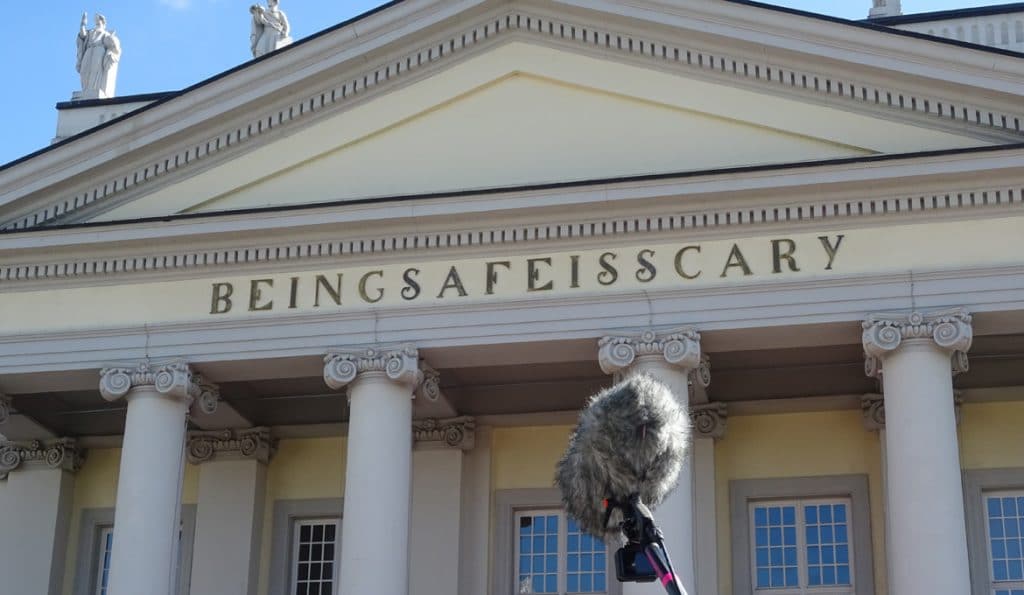
Voor mij is het mijn 8ste Documenta. Al veertig jaar bezoek ik in het trage ritme van om de vijf jaar, dit ‘wereld-samen-brengend-museum-van-100-dagen’. De Documenta is opgezet om te berichten over de staat van de hedendaagse kunst. In 1987 – ik was 20 – reden we in 1 ruk naar Kassel. ’s Nachts sliepen we ergens in de rafelrand van het Karelsaue stadspark, nabij de Orangerie. In een shelter tentje aan de oever van de Fulda. Met een briefje achter de voorruit van de Lelijke Eend met daarop ‘Achtung Kunstler’.

Kunst als verwerkingsmachine
Globalisering, het doorbreken van de Eurocentrische blik, kunst als verwerkingsmachine van onverwerkte geschiedenissen. Het is het steeds zwaarder wegende stempel dat curatoren zetten op het karakter van de hedendaagse kunst.
Ik heb het zich allemaal zien ontwikkelen. Ik groeide als het ware hierin mee. Wat zich aandiende als een ogenschijnlijke vanzelfsprekende ontwikkeling van de ‘super-curator’, waarin de kunstwereld groeide en zich opende voor nieuwe invloeden. Nu zijn we op een punt beland, waarbij deze benadering zichzelf in de voet lijkt te schieten.
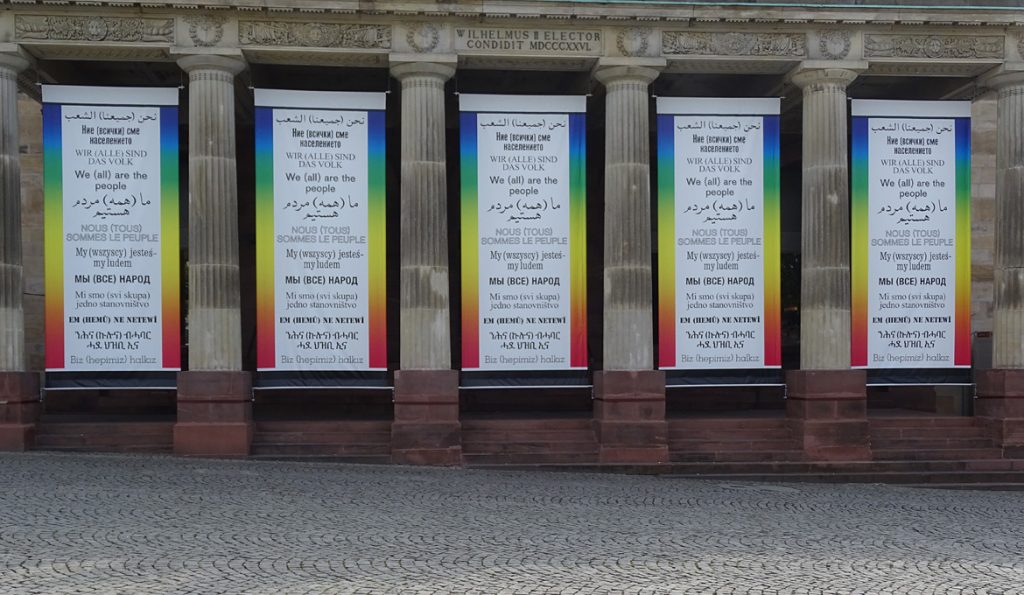
In de afgelopen 20 jaar is het een zichzelf bevestigende ontwikkeling geworden. Bij dit soort grootschalige hedendaagse kunst-tentoonstellingen zoals de Documenta of andere triënnales en biënnales, putten curatoren zich hierin uit. Het lijkt een doel op zichzelf te berichten over ‘hedendaagse kunst’ samengebracht vanuit weer een andere, meest verre uithoek van onze planeet. Hedendaagse kunst die zich lijkt te vormen naar het actuele thema dat de curator heeft vastgesteld. Het probleem daarbij is dat de getoonde kunst nog louter lijkt te dienen om het gelijk van de zienswijze van de curator te bevestigen. De getoonde kunstenaar veelal tot op dat moment een volslagen onbekende, die niet eerder aan het hele discours heeft bijgedragen.
De zo getoonde kunstwerken worden slechts instrumenteel gebruikt. Als ‘het plaatje bij het praatje’. De geselecteerde kunstenaar mag het statement van de curator onderschrijven. Kunst is hier niet aanwezig als een autonome kracht. Het werk is geselecteerd als de bevestigende metafoor voor de door de curator vastgestelde conditie van de wereld. De curator die als een nieuwe ‘G.B.J. Hiltermann’, the ‘wantoestand’ in de wereld bespreekt. De curator plaatst zich daarbij steeds meer in de rol van een vermanende, moraliserende dominee.
Ooit was het verrassend en hoopvol
Onder dergelijke omstandigheden voel ik me gedwongen terug te verwijzen naar bijvoorbeeld die ‘mythische’ tentoonstelling als ‘Magiciens de la Terre’, Centre George Pompidou (Parijs 1989) van de hand van Jean-Huber Martin. In deze tentoonstelling werd kunst van buiten de bekende kaders getoond naast ‘westerse kunst’. Getoond werd waar ze elkaar raakten in ziens- en werkwijze. Zowel verrassend als hoopvol over die wereldwijde verbondenheid in de kunst.
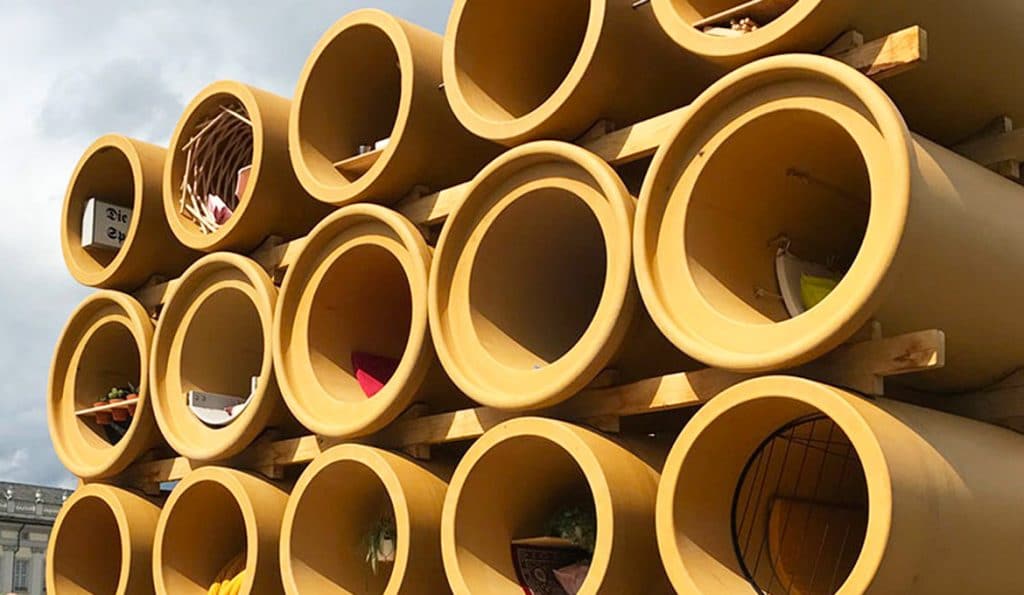
Zo was het ook met Documenta 10 in 1997, onder leiding van Catherine David dat de horizon werd verbreed. Het politieke engagement en -discours werd de kunst binnen getrokken. Precies zoals Susanne von Falkenhausen het in haar beschouwing over de Documenta beschrijft. Onder David was het een teer, maar een goed geregisseerd evenwicht. Politieke thema’s en kunst met krachtige uitbeeldingsvormen die elkaar in balans hielden. Dat is nu wel anders. Kunst met een krachtige, directe uitbeeldingsvorm is slechts schaars aanwezig in Documenta 14.
De begrenzing vervaagt steeds verder
Sinds 1997 is de druk op het kunststelsel om te reageren op politieke crisissen, alleen maar toegenomen. De begrenzing van wat nu precies het bereik en werkterrein van de kunsten is, is meer en meer verdund. Op zijn beurt heeft dit curator verplicht om de taak van hedendaagse kunst steeds nadrukkelijker (in politieke termen) te definiëren. Daarmee is de gepresenteerde kunst in dit soort grootse overzicht shows steeds meer instrumenteel van karakter. Daarbij wordt haar uitbeeldingsvorm ondergeschikt gesteld aan de boodschap. Zo boet ze in veel gevallen in aan kracht.
In 2002 tijdens Documenta 11 was het Okwui Enwezor, die het kolonialisme en het post-kolonialisme hier scherp en krachtig onder de aandacht bracht. Waarmee de verwevenheid van kunst en politiek in hedendaagse kunst in de uitvoering van deze curator nog sterker naar voren trad.

The Book of Books
In 2012 presenteerde Carolyn Christov-Bakargiev als artistiek leider haar zienswijze in een 800 pagina’s tellende catalogus. Haar ‘The Book of Books’ was als een ‘heilig schrift’.
In de praktijk is de werkwijze van de curator verbonden geraakt met een strikt gereglementeerde zienswijze. Zo kan het niet anders zijn, dan dat dit de kunstenaar in een dwangbuis plaatst. ‘Comply or become obsolete’ zo lijkt het dogma te klinken. Zo wordt een kunstevenement als Documenta niet meer het wereld samenbrengend evenement waar de actuele staat van de hedendaagse kunst wordt gepresenteerd. Helaas verwordt hij zo nog slechts tot een bombastische, zwaar theoretische preek van de leidende curator voor zijn eigen parochie.
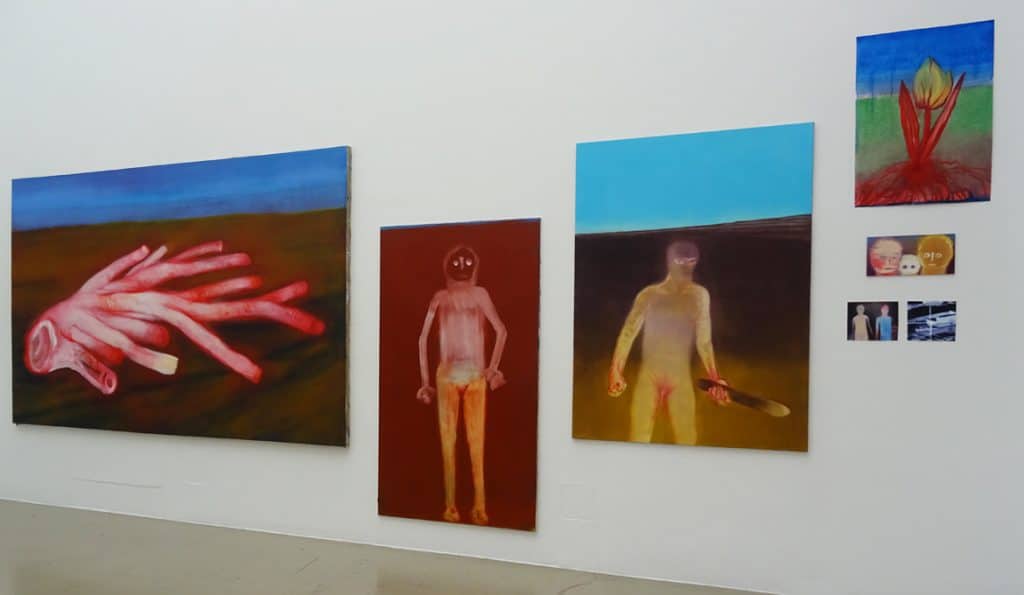
Documenta 14
Wat zegt dit nu over de aanpak van Adam Szymczyk? Allereerst was ik verrast en blij met zijn aanpak. Een aanpak zo leek het, om het belang van de hedendaagse beeldende kunst aan te laten grijpen op het hoogste niveau. Ik begreep de drang om Documenta in het oog van de storm te willen plaatsen. Om daarom Documenta naast in Kassel, ook in het geplaagde Athene te doen plaats vinden.
Bezien in de actualiteit van vier jaar geleden, was Athene de perfecte plek. De plek om te laten zien dat de stem van de kunst ertoe doet. Getoond in sterke vormen. Ondanks het valide uitgangspunt blijkt – nu ook het deel van Documenta 14 in Kassel van start is gegaan – dat het de kunst zelf geen dienst bewijst. Het concept ‘de toestand in de wereld te diagnosticeren aan de hand van vooraf strikt vastgestelde gethematiseerde regels’ wordt een doel op zichzelf en het plaatst de kunstenaars in een dwangbuis en de kunst in hokjes.
De antropologische artistic researcher
De theoretisering is door zijn overdaad omgeslagen in vervlakking. Er worden zoveel thema’s en deelthema’s aangesneden, dat de simpele vraag zich opdringt: ‘Waarom?’. De kunstenaar worden hierbij steevast in de rol geplaatst van ‘artistic researcher’. Analoog aan die van antropologisch- of zelfs etnografische onderzoeker. De aandrager van weer een volgende ‘curiositeit’. Het is dit proces dat het uitbeelden van de notie van urgentie tot een object -het kunstwerk- vervangt. Dit geeft aanleiding tot de klacht dat de kunst die wordt getoond geen sterke beelden oplevert. Het theoretisch kader overwint….
Wat is de beeldende kracht van een tot wandvullende projectie opgeblazen registratieformulier uit een fout verleden? Neemt Documenta 14 zo het uitgangspunt van Arnold Bode (initiatiefnemer van de Documenta) in die zin niet bijna te letterlijk? “De stand van de hedendaagse kunst te documenteren (Waar van dan ooit de naam Documenta)”. Verkeert de kunst dan werkelijk in een existentiële crisis?
Dystopische escape rooms and cold-cases
Documenta 14 toont in deze zin van alles onder de noemer ‘kunst’. Vooral zaken die in hun verschijningsvorm ons niet als ‘Kunst’ aanspreken. Documenta 14 is daarom in mijn ogen verworden tot een papieren tijger. Het zijn vooral documenten, in archieven teruggevonden en nu getoond als bewijsmateriaal van onopgehelderde, onverwerkte, onrechtmatige zaken. Ondanks al die retroperspectieven, de cold-cases en de historisering met elk zijn belang, is Documenta 14 ten prooi gevallen aan de waan van de dag.
Het is daarmee eerder een verzameling van gerechtelijke processen en -dwalingen, dystopische escape-rooms en Netflix policiers. Een aanpak die in mijn ogen de autonome kunst niet echt dienst bewijst. Kunst die voor zichzelf best een krachtig betoog kan houden. Kunst die ook overeind blijft zonder een zo overdreven theoretiserend kader.
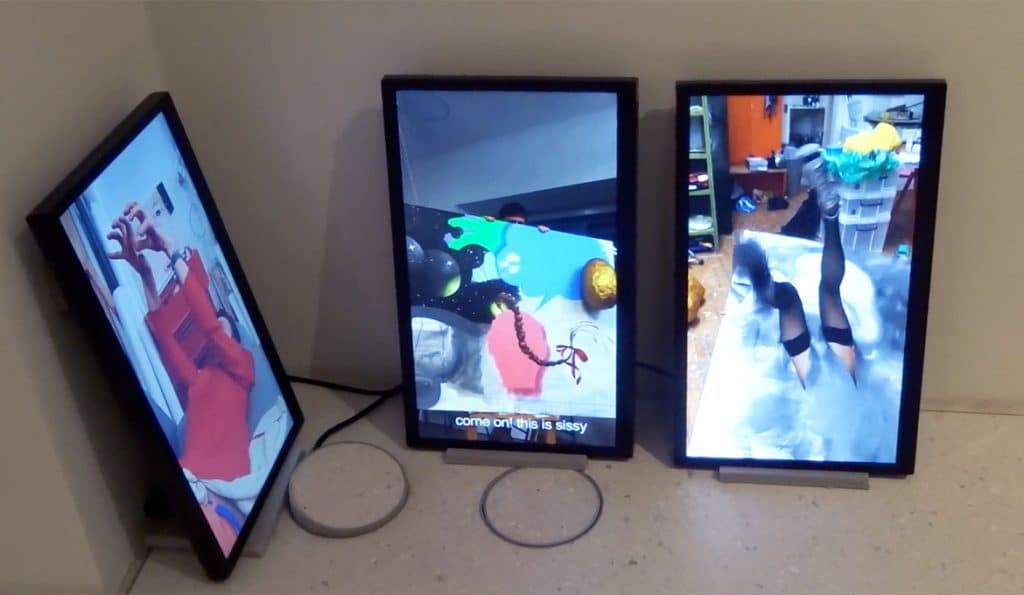
Tipping point
Waarom ik dan toch blij ben met deze Documenta? Op de eerste plaats omdat hier overduidelijk is gebleken, dat deze ‘curatorische dwangbuisbenadering’ de kunst en de kunstenaars geen recht doet. Ook die onbekende van ver weg naar Kassel versleepte kunstenaars. Hopelijk heeft deze curatoriale aanpak daarmee nu echt zijn langste tijd gehad. Daarmee hoop ik dat Documenta 14 een omslagpunt markeert. Ik zie uit naar een serie prachtig groots opgezette tentoonstellingen, die gaan over krachtige autonome hedendaagse kunst. Kunst die sterke statements maakt over de wereld waarin we leven, maar niet ingekaderd is in reeksen thematische hokjes. Werk over de positie van de kunst in de wereld. Misschien wel zoiets als een mix van ‘Magiciens de la Terre’ (1989, Parijs) met zoiets als Westkunst (1981, Keulen).
Instorting van de staande curatorische pratijk
Wil je getuigen zijn van de instorting van een staande curatorische praktijk? De aanpak die de hedendaagse kunst instrumentaliseert en daarmee marginaliseert? De aanpak die het kunstbegrip zo verbreedt, dat het even dun en kleurloos wordt als een homeopathisch zalfje? Ga dan naar Kassel! Het is de uitgelezen kans om de vooraankondiging van deze paradigmaverschuiving zelf te ervaren. In mijn ogen de bonafide reden om naar Documenta 14 af te reizen.
Naar Kassel
Er is een tweede reden waarom ik blij ben met deze Documenta 14. Dit in weerwil van de inzet van de artistieke leiding en het legertje aan curatoren. Ondanks hun inspanningen heb ik kunnen constateren dat hedendaagse beeldende kunst nog altijd die verwonderende kracht heeft. De kracht om je uit je comfort zone te stoten. Zo tot je door te dringen met onverholen zeggingskracht. Ook hier (en daar) in Kassel. Weg van de bullshit van een overtrokken theoretisch kader en de onvermijdelijke hokjesgeest maar recht er in. Het plezier dat dit geeft, waarom naar kunst kijken echt altijd voldoening geeft.
Ga kijken en laat je verrassen! Vergeet voor even alle goede bedoelingen van Adam Szymczyk en zijn team. Dat is goed voor de catalogus. Laaf je aan de kunstwerken, die die hun ‘stem’ verheffen. Dat zijn wat mij betreft de lessen van Athene en Kassel, en daarmee van Documenta 14.
Practical information
Documenta 14 vindt dit jaar plaats in zowel Athene (nog t/m 16 juli) en in Kassel (t/m 17 september). Meer informatie vindt je op: documenta.de
Alle foto’s van Jan-Willem van Rijnberk, gemaakt tijdens het bezoek aan de Documenta 14.
